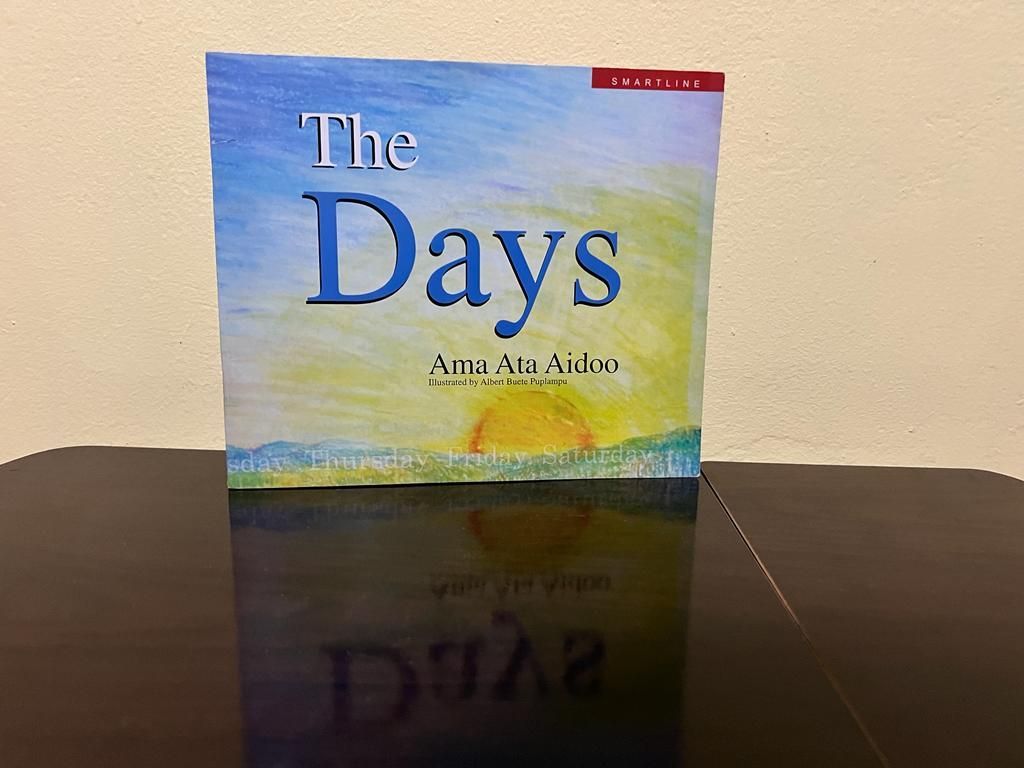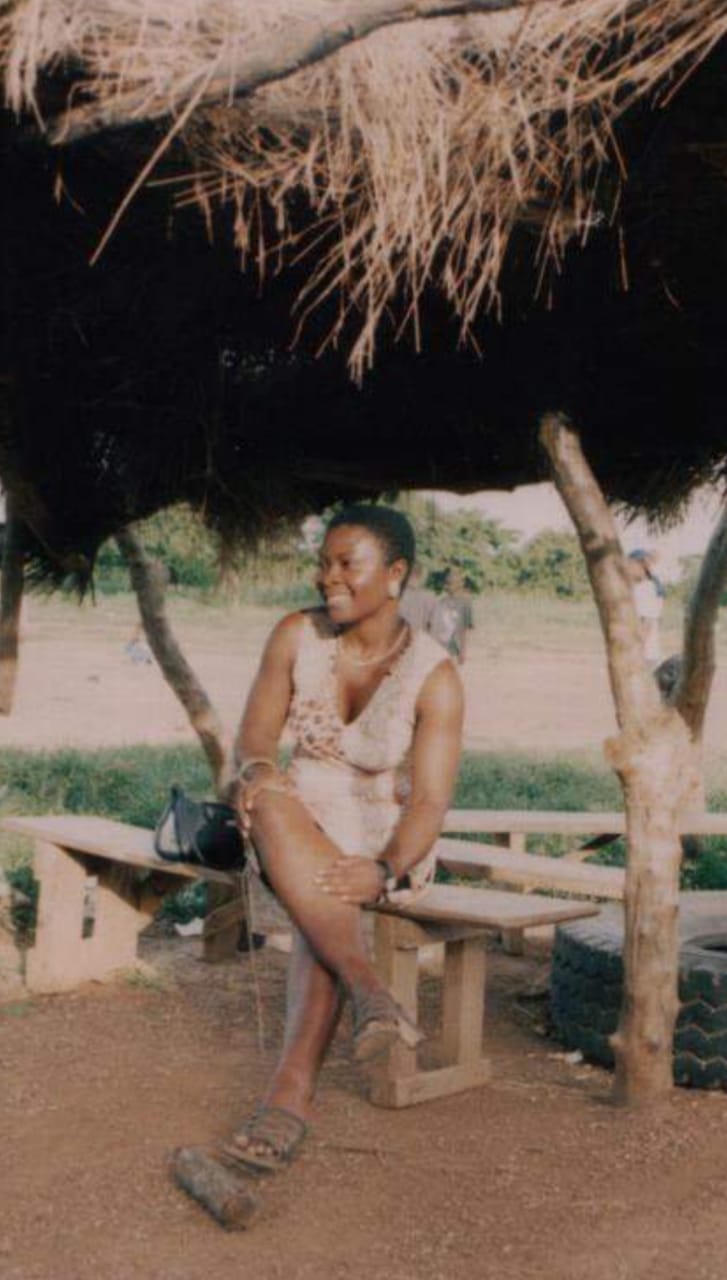My Recurring Dream-What does it mean?
Esi Arhin • August 15, 2021

Episode 3
I'm finally sharing this dream because of a rather very peculiar incident on my last visit there. I had not been there in the year 2021 until last night. I found myself involuntarily at the place again. Happily basking in its glorious sun rays, just walking and enjoying the songs of the birds. From a distance, I saw a pretty cottage and there, a man was weeding with a hoe. Suddenly, he stopped weeding and looked up straight in my direction. I must have looked at him so hard it bore into his soul to look up at me. Have you ever experienced that feeling of being watched? The man called out, “Tabewah, is that you?” Goodness, how did he know my "suitcase" name? I hurriedly walked to him, "Yes it's me."
When I got close, I realized why he knew my private name, I recognized him. It was one of my mother's younger cousins I know from our village. I did not recall his name as we've always referred to him as uncle. Typical of Fantes, my tribesmen.
I asked if the place was his, it wasn't. He was just tending to it. He picked up his hoe and asked I come with him. He took me to sit under a shed with thatched roof. I could tell it was his usual rest station. A few of what I assumed to be his belongings were strewn about. On the ground were what looked like two cement blocks serving as seats. He offered me one to sit on. We both sat and caught up. I told him how just the other day my mother had spoken of him and said she did not have his contact but needed to speak to him about an outstanding family matter, so she was going to call my far older cousin, Aggie who also lived in the village to connect them. He was very happy to see me. He peeled sugarcane with a small cutlass and offered some to me. I thanked him and got to work on them. These were the softest, sweetest and juiciest sugarcane I've ever had. Not sugar sharp sweet like sugar yet sweeter,. in no time I was full and had to stop although many remained in the old well-worn size 32 aluminum bucket of years ago. I had not seen one like that in a very long time. I asked him who owned the place, he signaled in the direction of the little cottage, pointing with his head, 'they are over there." Just then, as if on cue, a homely looking woman, plump, beautiful olive skin with apron tied to her waist, head wrapped in a silk duku, the kind my maternal grandma" Maami" used to wear came out the door and called out in an unfamiliar language.
Just then a girl jumped down from a short tree nearby which I had not noticed the whole time I was sitting with Uncle under the shed. The girl looked in her early teens, big boned and stocky, there was something familiar about her but couldn't easily point it out. She wrapped her palms around the stem of tree, it was thin, and shook it a few times. Then, down came a rain of big fresh red tomatoes, shaped like the Navrongo kind but much bigger in size, juicer too. I could tell they were juicier than the kind from Navrongo because a few of the many that fell to the ground burst open spilling red wine-like juices on the dark, obviously very fertile soil. Can you imagine seeing red clearly on dark sand? That's exactly how it was. There were blotches of squashed red fatty tomatoes here and there on the ground. The girl left the tree and walked towards us, pass us, ignoring us but not in a rude manner.
It seemed she was oblivious to our presence. I felt a bit slighted. If she is used to Uncle, she does not know me so a little acknowledgement would have been nice, I thought as I watched her walk hurriedly into the cottage. In a flash she was back outside, by the tree and picking the red tomatoes off the ground into a familiar calabash bowl. I looked closely at the calabash. It is my calabash. The very same one I bought at Nima market which my friend Afia says she would never, not in a million years, spend the amount I spent purchasing a calabash. I remember laughing and telling her she had absolutely no taste. Could she not see the beauty of the natural etchings merged with the handmade carvings?
Anyway, it was this very calabash which hangs on the wall in my lounge, next to the floppy wall basket my beloved Fati, who sells amazing Bolga baskets and numerous other local artifacts at the market in Bolga, gifted me. How did she come by it? I don't use that bowl in the kitchen! Beginning to feel vexed I checked myself, remembering to be nice as I wanted Uncle to introduce me to the woman and her daughter. I wanted to go and help the girl pick the tomatoes but was hesitant, ''too forward'', ''leave it be'', I advised myself. The girl picked the tomatoes until the bowl was full and brimming with tomatoes. Lazy girl, I thought, I bet many of the ones on top will fall back to ground and make a mess. So wasteful. She picked up the bowl, held it in balance to her chest and walked back into the cottage. Not a single tomato fell. It was marvellous.
I was expecting the girl to come out and gather the rest of the tomatoes, but she didn't. There were still so many left on the ground. A big enough pile, by my eye's calculation, to fill all three trays in my refrigerator. I was bothered they may be left to go to waste. I dismissed the thought and focused on getting introduced to the woman and her stocky daughter. Thought of the woman and her daughter jolted me back into awareness as I was beginning to drift off in thought. Uncle was running on about something but he had lost me. The woman called out for Uncle to come take something, the language was not one I knew but somehow I understood exactly what she meant.
Uncle jumped up respectfully and run to the woman who was at the cottage door with a bowl of the most colourful variety of vegetables I've ever seen. It looked like whole vegetables salad. I could see small green bell peppers as well as jalapenos sprinkled on top. It looked so pretty I wanted to take a picture for my Facebook friend, Indira Brew, who loves to post colourful artistic photos of fruits and vegetables on her wall. There's a particular one she put up I loved so much I saved it to my favourites. It is a photo of corn in different variety, very colourful and pleasant to look at. The pleasantness of the basket of vegetables was a thousand times more pleasing to the eye than the corn photo I saved. Unfortunately, I did not have my phone with me so I couldn't take a picture of it. It would have been a delight to share with Indira.
Uncle took the bowl from the woman and left saying nothing to me. I knew he was taking the bowl of vegetables to the mill. I don’t know how I knew but I knew. Alone, under the shed, I contemplated going to introduce myself to the woman. Perhaps it was a bad idea, but is it? Next I knew I was back to walking around the place. By this time, I was used to discovering new things, so I expected to. I walked through an amazing garden with perfectly pruned trees. Someone had worked on a Japanese Bonsai tree, it sat majestically in the middle of the garden, centred exactly as you would place a focal piece. I wondered why parts of the place were tended to and others not.
Before I could complete the thought, I was transported under the shortest ever pawpaw tree with super large deep green leaves. I love pawpaw, so imagine my delight. I don’t know how I came by a plastic basket but there was one by me, half filled with long tube-like pawpaws. They were the sizes of medium size yams but shaped just like pawpaws. It was fascinating. There were low hanging ones which I easily plucked. I filled the basket and set off. Although I was carrying a basket full of large sized pawpaws, it felt weightless. In a split second I was by what looked like a pen, but it was not complete as the last side to close off the fence was left undone – Perhaps that's why there are no goats in it. Besides the little white rabbit I saw on my very first visit there I had not seen any other animal of any kind. Just hundreds and hundreds of fruits, plants and flowers. Oh yes, and the butterflies.
Next to the uncompleted pen was a large signpost. It had a white board with the bold inscription VERY GOOD on it. VERY at the top, GOOD at the bottom. The chirping of the birds got louder, in a singsong way, it moved me to such joy I started to dance and dance and dance. Feeling light and weightless I began to float in the air like astronauts do in space with a basketful of pawpaws. Then came a revaluation. A phrase flashed before my eyes. A voice said,
''This is the
VERY GOOD place''
My eyes opened, I was solidly on my bed and in my room. I was awake, back to earth where gravity reigns supreme.
Well, to interpreters of dreams and prophets, those yet to prove untrustworthy, what does my recurring dream mean?
Esi's Blog

Ama Ata Aidoo's The Days , a picture book for children is a delight to read. Illustrated by Albert Buete Puplumpu, the book offers relatable descriptions of days of the week and their unique characters in a fun way. The theme of differences and similarities resonates clearly. The author employs the use of rhythm, rhyme, repetition and imagery to deploy the story. In comparison to how days behave, it plays on the characteristics of animals and things to enforce its message while encouraging children in an unsuspecting way to apply their mathematical skills. The simplicity of style and subject makes it an easy read for young children. At the same time, it holds a certain appeal for adults because of the subliminal meaning portrayed for those who understand the battles fought in daily existence. This book explores the possibilities in each day, painting a picture of life and its unpredictability in general. It assures the young that differences are normal and in fact to be expected. For adult readers it reinforces our knowledge and understanding of daily life challenges, leaving a sense of balance. The performance potential it holds is most exciting. Each day's character stares the imagination and evokes an actor in the reader. The colourful illustrations depict familiar images in ethereal bliss, typically that of the old village wall. The front cover captures the theme beautifully. It shows the different characters of days by seamlessly fusing together colours symbolizing the differences in days. The illustrations are very effective in enhancing the story. Although "Each day has hours of ten, ten and four..." "All the days are not equal" indeed. Children are sure to be entertained and learn about diversity. I'm enamored! The Days is far more than a good read. Children, gather round!

Navrongo, the capital town of the Kassena-Nankani district lies south of Paga, the main border crossing between Ghana and Burkina Faso. It sits at the tropical Savannah belt, Upper East of Ghana. I first made my way there sometime in September 2002 through a friend who couldn’t believe I had lived all 27 years of my life in southern Ghana, never having traveled up north. He insisted I needed the exposure and so he dragged me with him. He said I had not lived If I had not seen the sun rise on the Tono dam. So, one fine morning at 5:00 am, I jumped into his pick-up truck, and we headed up north where he had made a home away from fanteland. It was the longest road trip I had ever embarked on at the time, 15 hours on the road to be precise. Takeaway the breaks we took at Kumasi, Kintapo and Tamale. I barely noticed the hours pass as we chatted all the way with the company of Fela Kuti and Bob Marley playing in the background on repeat. To this day, the ride to Navrongo remains one of the fondest memories I have of traveling Ghana for work or leisure. This part of the country is home to two ethnic groups, the Kassims and the Nakanas. Historically, it is said that these two ethnic groups have had relative independence because the Ashantis didn't invade them. However certain treaties established by the British in 1898 an Anglo-French convention came up with an agreement to divide the lands. The Kassims and Nankanas were subsequently separated from their relatives who today live across the border, Burkina Faso. Older indigens of Navrongo know it as Navoro, which means (to put your foot down on soft ground). Today, the town is indeed soft ground to live and explore what new opportunities it has to offer, including access to tertiary education locally. The siting of Tedam University of Technology and Applied Sciences campus to the township has brought much warmth to the once laid back and very quiet town. Yet, it still remains relatively calm in comparison to Bolgatanga which is 30 kilometers away by road, about 40 minutes’ drive. It is an important market town in the area. The people are mainly subsistence farmers and rearers of cattle and goat. Navrongo is known for its famous mud-built cathedral and grotto, Our Lady of Seven Sorrows. Although it doesn't haven many formally designated places of tourist attraction, it is by its character a great attraction. The warmth of the people, the native architecture, fabrics, the market, the guinea fowl joints, the easy connection between humans and cattle in full glare, make up a total unique culture for experiencing. Marked places of interests in addition to the mud-built cathedral are the Tono dam, which is one of the largest agricultural dams in West Africa, also the first ever solar plantation and the health research centre. It is awesome to watch the sun rise ever so gracefully on the Tono dam.The rising of the sun is said to symbolise the journey of the sun in the sky. At about 5:00 am one morning my host and I set off on a drive to see the famous sunrise on Tono dam. The joy of watching the sunrise on the dam is next to none, with nature at its best early morning. The sun’s golden rays added a burnt orange colour to the smoky clouds. A small ball of light emerged from the sky at first. It then slowly starts to get bigger and illuminate. As if on cue birds began to chirp in glorification of the glow of the orange goddess. Its beauty is beyond description, I cannot do it justice. Suddenly, out of the blue it bursts out into a gleaming ball expanding at a moment's look. The first rays are gentle and soft on the eyes. It is a rare joy, eternally etched in memory. I have seen many a sunrise over the years but this one was magnificent, just as my host promised. It was worth every bit of the journey. One thing I found most fascinating is the hand production of ethnic fabrics by the women of Navorongo. They grow and eat their own food. They make their own beer(pito), their own beauty products from largely local materials. They build their homes with their bare hands also with local materials. They made ordinary what appeared phenomenal to me. There are some fairly decent guest houses and lodges to stay in, especially for low budget travelers. Moving around is not difficult, there are taxies and motor cars available for hire as well as collective rides. For a fun night, there are lots of drinking spots and bars to hang out and dig into some well spiced charcoal grilled guinea fowl or beef kebabs. You may sample grilled guinea fowl in as many grilling spots as you like. That is a sport in itself. I've had several opportunities to return to Navrongo after my first visit. With each visit the land and it’s people grow on me. Memories of Navrongo call. Nearly two decades after my first trip there, my heart still misses a beat at the mention of her name. Could it also be that the face of that handsome Kassim man still smiles on me?
